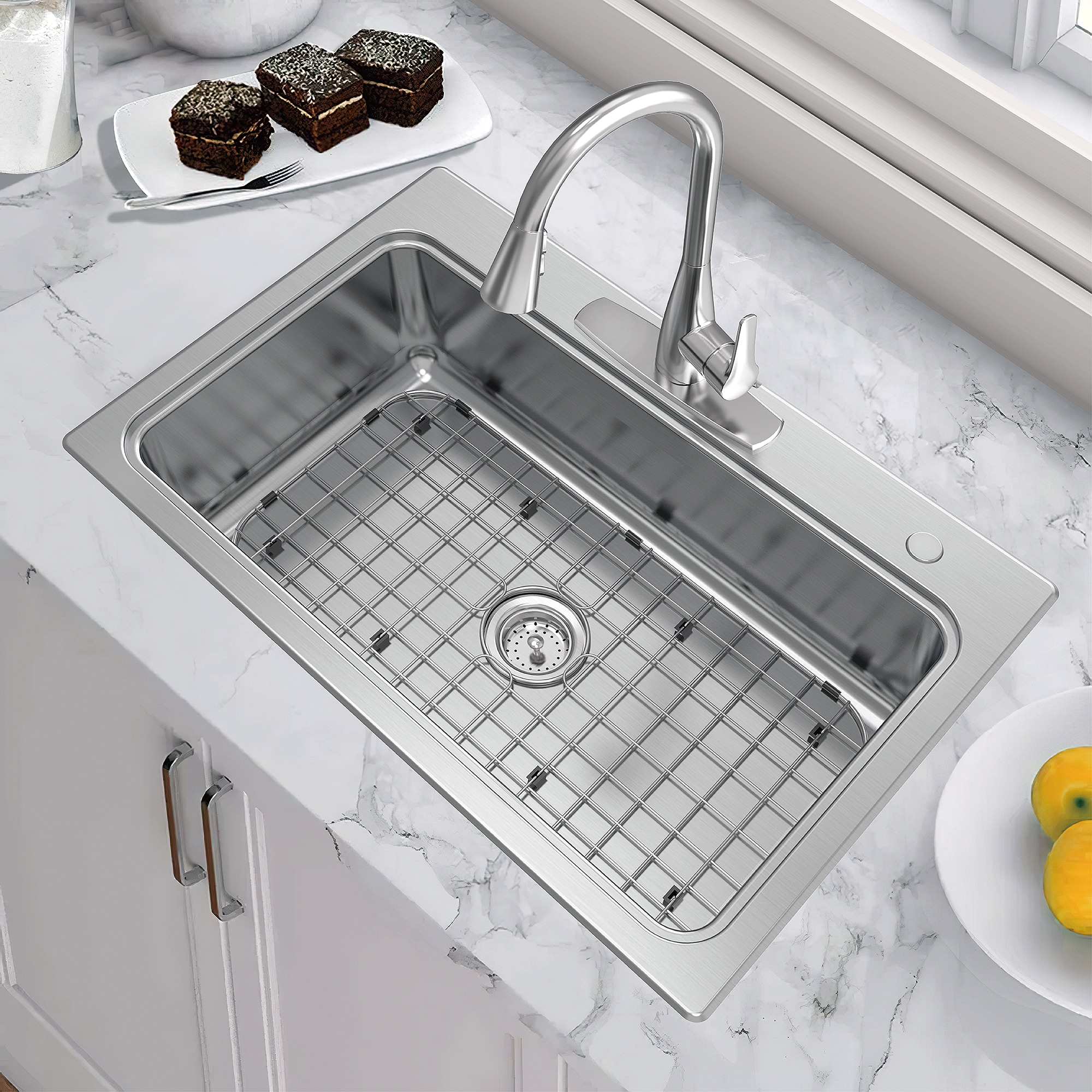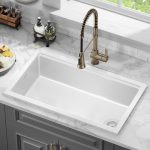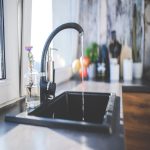Understanding the Causes of Kitchen Sink Clogs
Common Causes of Sink Blockages
Kitchen sink clogs are a common household issue often resulting from a build-up of various materials within the plumbing system. Food particles, grease, and soap scum are the primary culprits behind these blockages. Grease, in particular, is notorious for causing problems because it can solidify in the pipes, creating a sticky residue that traps other debris. Over time, this residue can lead to significant blockages that impede water flow. Food scraps, such as vegetable peels and meat trimmings, and coffee grounds also contribute to the clogging process. These materials can combine with grease and form a dense, sticky mass that is difficult to remove. Understanding these causes helps in preventing clogs by addressing the root of the problem before it becomes severe.
Identifying Symptoms of a Clog
Recognizing the early signs of a clogged sink can save you from more severe plumbing issues. Common symptoms include slow drainage, where water takes longer than usual to disappear down the sink, and gurgling sounds, which indicate trapped air in the pipes due to blockage. Unpleasant odors coming from the sink are also a clear indication that something is obstructing the normal flow of water and waste. In extreme cases, clogs can lead to overflows, potentially causing water damage to your kitchen. By paying attention to these symptoms and acting promptly, you can address minor clogs before they escalate into major issues requiring professional intervention.
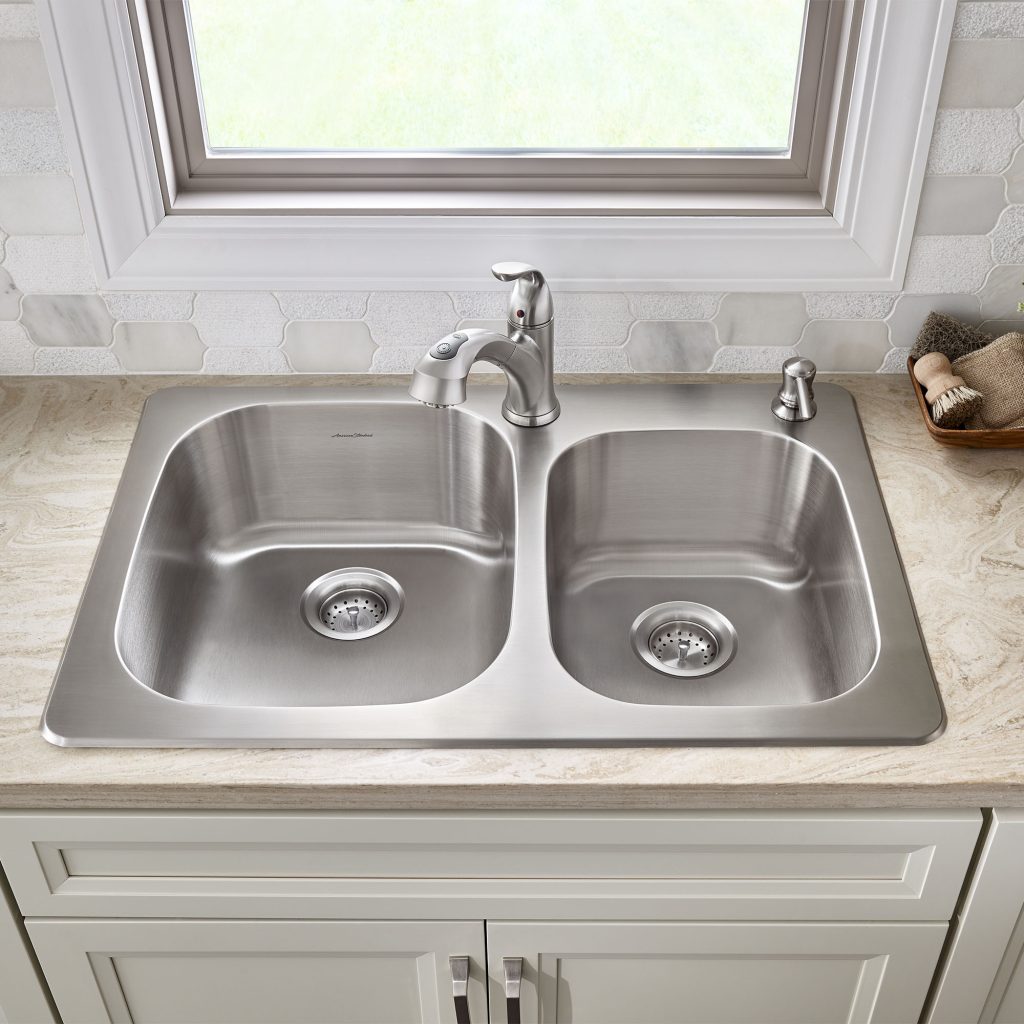
DIY Solutions for Minor Sink Clogs
Using a Plunger Effectively
A plunger is a versatile tool often used to tackle minor kitchen sink clogs. For effective use, ensure that there is enough water in the sink to cover the plunger’s cup. Position the plunger over the drain and apply firm, consistent pressure. The vacuum created by the plunging action helps to dislodge the clog and restore normal drainage. It is crucial to maintain a good seal around the drain to enhance the plunger’s effectiveness. If the water level does not rise significantly, it might be necessary to add more water to achieve a better seal. Repeat the plunging process several times if needed and check if the drainage improves. This method is simple yet often effective for clearing minor blockages.
Employing a Baking Soda and Vinegar Mixture
A baking soda and vinegar mixture is another popular DIY solution for addressing minor kitchen sink clogs. This method leverages the natural cleaning properties of these common household ingredients. Begin by pouring half a cup of baking soda down the drain, followed by half a cup of vinegar. The chemical reaction between the baking soda and vinegar creates a fizzing action that helps to break down grease and debris. Allow the mixture to sit for 15-30 minutes to maximize its effectiveness. Afterward, flush the drain with hot water to help clear out any remaining particles. This method is particularly useful for organic blockages and can be a gentler alternative to chemical drain cleaners.
Using a Plumbing Snake for Stubborn Clogs
Selecting the Right Plumbing Snake
When DIY methods fall short, a plumbing snake (or auger) can be highly effective for clearing more stubborn clogs. Plumbing snakes come in various types and sizes, including hand-crank models for residential use and electric versions for more heavy-duty tasks. Selecting the right type of snake depends on the severity and location of the clog. Hand-crank snakes are generally suitable for most household blockages and are relatively easy to use. Electric snakes are more powerful and can handle tougher clogs but require a bit more expertise to operate. Ensure you choose a snake that fits your needs and is appropriate for your sink’s plumbing.
Operating the Plumbing Snake
To use a plumbing snake, insert the end of the snake into the drain and begin turning the handle or operating the electric mechanism. Continue to push the snake further into the pipe until you encounter resistance, which indicates the location of the clog. Apply steady pressure while turning the snake to break up or hook the obstruction. Once you feel the clog has been cleared, carefully retract the snake and run hot water through the drain to flush out any residual debris. This method is effective for removing clogs located further down the pipe or in more challenging areas.
Chemical Drain Cleaners: Pros and Cons
Evaluating Chemical Drain Cleaners
Chemical kitchen sink drain cleaners are a readily available option for dealing with stubborn clogs. These products typically contain powerful chemicals, such as sodium hydroxide or sulfuric acid, designed to dissolve blockages. They can be effective at breaking down grease and other materials that might be causing the clog. However, it is important to use these cleaners with caution. Follow the manufacturer’s instructions carefully to avoid potential hazards. Chemical cleaners should be considered a last resort when other methods fail, as they can be harsh on your plumbing and may not be suitable for all types of pipes.
Risks and Precautions
While chemical drain cleaners can be effective, they come with several risks. The harsh chemicals can damage pipes, especially if used frequently or on older plumbing systems. Additionally, the fumes from these cleaners can be strong and potentially harmful, requiring proper ventilation during use. It is crucial to wear protective gloves and eyewear to avoid contact with the chemicals. Furthermore, mixing different types of chemical cleaners can result in dangerous reactions. Given these risks, it is often better to use safer, non-toxic methods whenever possible and reserve chemical cleaners for situations where other solutions have not worked.
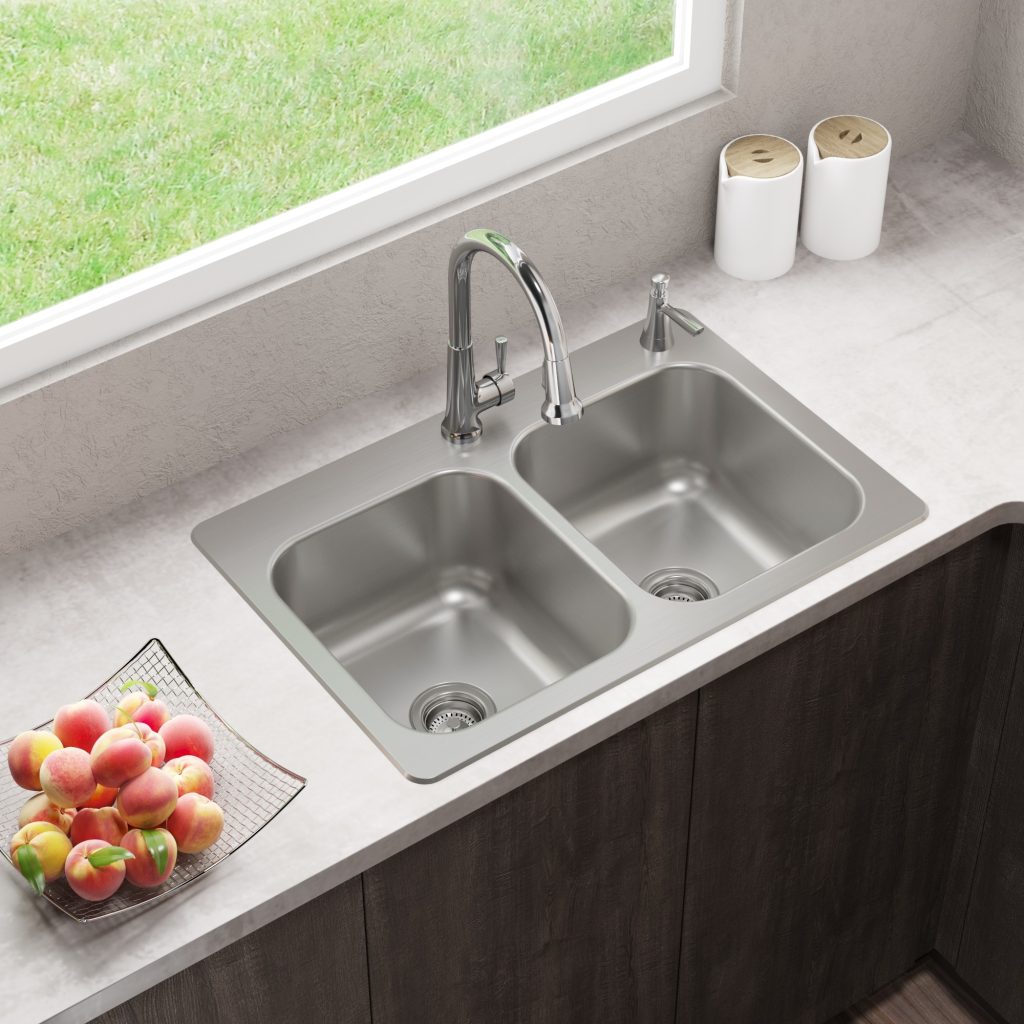
When to Call a Professional Plumber
Recognizing the Need for Professional Help
In some cases, despite your best DIY efforts, the clog may persist or become worse, indicating the need for professional assistance. If you experience frequent backups, persistent clogs, or notice other signs of plumbing issues such as water damage or unusual noises, it may be time to consult a professional plumber. These issues could signal underlying problems, such as pipe damage or blockages that are too severe for DIY methods to resolve. A professional plumber can provide a thorough inspection and diagnose the root cause of the problem, offering more comprehensive solutions.
Benefits of Professional Plumbing Services
Engaging a professional plumber offers several advantages, including access to advanced diagnostic tools and techniques that can identify and address complex issues. Plumbers use specialized equipment, such as camera inspections, to view the inside of pipes and locate blockages with precision. They can also handle more severe problems like pipe damage or root intrusions that may be contributing to recurring kitchen sink clogs. By hiring a professional, you ensure that your plumbing system is properly maintained and that any potential issues are addressed effectively, potentially saving you from costly repairs and extended downtime.
Preventive Measures to Avoid Future Clogs
Implementing Proper Waste Disposal Practices
Preventing future kitchen sink clogs involves adopting better waste disposal practices. Avoid disposing of grease, coffee grounds, and large food scraps down the sink, as these materials contribute significantly to clogs. Instead, use a grease trap to collect grease and dispose of it in the trash. Installing a sink strainer can also help catch food particles and prevent them from entering the drain. Educate everyone in your household about proper disposal methods and encourage the use of compost bins for organic waste. By implementing these practices, you can significantly reduce the likelihood of future clogs.
Handling Emergency Sink Clogs
Immediate Actions for Severe Blockages
In cases of severe kitchen sink clogs or overflows, it is important to act quickly to prevent water damage and further complications. First, turn off the water supply to the sink to stop any additional flow of water. Use towels or a mop to clean up any spilled water and prevent damage to your kitchen floor. If you are able to, try using a plunger or plumbing snake to address the clog. If the situation is beyond your control or the clog persists, contact a professional plumber for emergency assistance. Prompt action can help mitigate damage and resolve the issue more effectively.
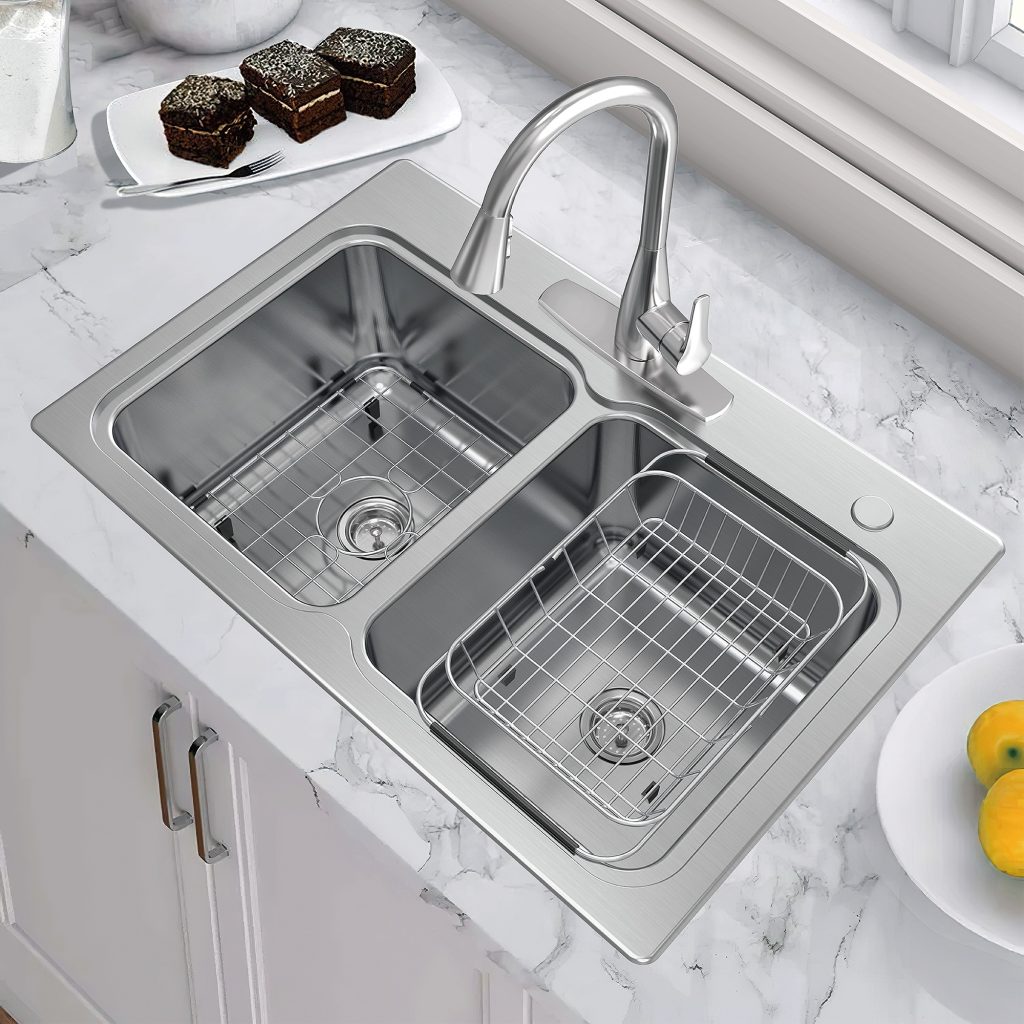
Conclusion: Maintaining a Functional Kitchen Sink
The Importance of Timely Clog Resolution
Addressing kitchen sink clogs in a timely manner is crucial for maintaining an efficient and functional kitchen. Understanding the causes and symptoms of clogs allows you to take appropriate action before minor issues become major problems. Whether you use DIY methods or seek professional help, acting promptly ensures that your sink remains in good working order. Timely resolution helps prevent further damage and maintains the overall health of your plumbing system.
